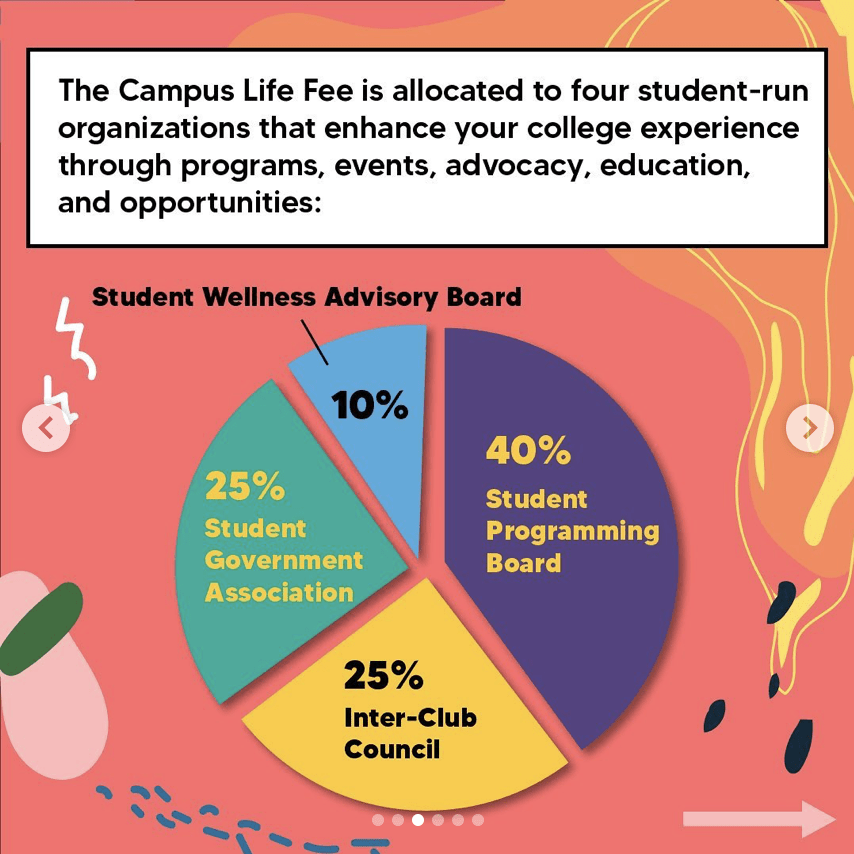Pepperdine continues to be empty for the fall 2020 semester but remains bustling with activity online via Zoom and other formats. Although on-campus events are suspended, the Campus Life fee is still reflected by the student groups’ ability to provide community events. Photo by Ali Levens
Correction: The fee breakdown was incorrect in the original version of the story. The Student Programming Board receives 40% of the funding, Student Government Association receives 25% of the funding, Inter-Club Council receives 25% of the funding and the Student Wellness Advisory Board receives 10% of the funding.
Correction: The name Sabrina Willison was misspelled in the original version of this story. Willison is the adviser for Inter-Club Council.
Over the past week, countless Pepperdine students have asked the same question: “Why are we being charged a Campus Life fee if we are not even in the same city, state or even country as Pepperdine’s campus?”
Apart from the small number of students who live on Pepperdine’s campus due to personal hardship or other circumstances, students generally find themselves conducting their school work from their own homes. As such, many were surprised when a $63 Campus Life fee appeared in their finance tab on WaveNet.
Four groups receive the funds that the Campus Life fee generates. These groups are The Student Programming Board, Student Government Association, Inter-Club Council, The Student Programming Board and the Student Wellness Advisory Board. Respectively, the clubs receive 40%, 25%, 25% and 10% of the total Campus Life fee. To increase transparency and promote ongoing events, the four groups took collective action and, over the past few weeks, have shared social media campaigns outlining how each club uses its budget and plans for the rest of the semester.

During a regular semester, the Campus Life fee costs $126. The University Management Committee chose to reduce the fee by half with input from Brittany Skinner, director of Student Activities. Skinner, as well as student leaders — presidents, senators and directors — from the recipient organizations, recommended a reduction in the fee.
Although each of these groups promotes the idea of “Pepperdine as a community and not as a physical location,” Skinner said she understands why students may have adverse feelings over the fee.
“The students that oversee these areas care about the student experience; they are students themselves,” Skinner said. “So I hope that other students will trust that these student leaders are doing whatever they can to make the student experience better for everyone this semester.”
Skinner said she believes students can receive the full benefits of the fee by learning from SWAB, becoming part of the SGA, participating in clubs and accessing funds.
“Students are charged the Campus Life fee to provide community, education and programming even in a time of distance,” said Stacey Lee, SWAB’s health, wellness and resilience education program coordinator. “This year, with these circumstances, the Campus Life fee is not so much the ‘Campus’ Life fee as it is a ‘community’ life fee to build connection and fun during remote learning.”
Many groups hosted events over the summer in addition to their upcoming fall programming. For example, SGA held a Zoom conference Aug. 26, to provide information on the upcoming student elections, which provide a unique opportunity for students to create tangible change within their Pepperdine community.
On the same day, Tide Pools, Pepperdine’s club fair presenting over 90 student organizations, took place. This was particularly useful to first-year and transfer students who sought to obtain a taste of the community they signed up for when they enrolled at Pepperdine.
ICC Adviser Sabrina Willison said she recommended the Peppervine website for students who want to get more involved; this webpage is a helpful resource for getting to know what events are going on at all times. On its main page, it includes current public events such as Strolling with SPB and the SOA Weekly Meeting.
Moreover, 138 different clubs have their own sub-page where they post about their past achievements and future opportunities to get involved. Students who prefer Instagram can access SGA, ICC, SWAB and The Board‘s pages, which are updated regularly.
Some students, however, remain unconvinced.
“Some might benefit from the events despite them being online,” sophomore Astrid Olsen said. “I am not one of those people who feel as though online events can stimulate the effects of an in-person event.”
She affirms she will not be attending any of the events this coming semester, so it would it is not fair that she still has to pay the fee.
As of now, students residing on or near campus will also have to interact with the Pepperdine community via Zoom. Pepperdine will continue to follow local, county, state and national guidelines, meaning that individuals cannot meet in person unless they live in the same household, said Jared Maguire, co-chair of the Administrative and Special Projects Committee.
“If there comes a time when that is possible and it is approved, it is something that will be reviewed all the way up through administration first — but as with all of Pepperdine, the health and safety of our students are always first, and we will seek to create a community in the safest way possible,” Maguire said.
____________
Follow the Graphic on Twitter: @PeppGraphic
Email Cristobal Delgado: cristobal.delgado@pepperdine.edu

